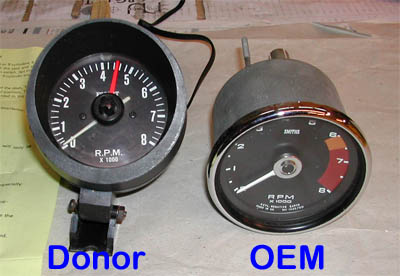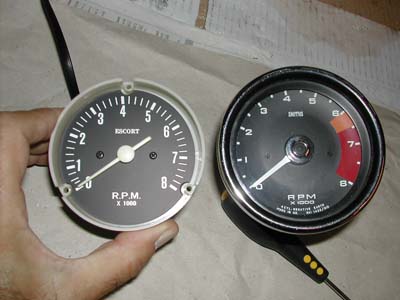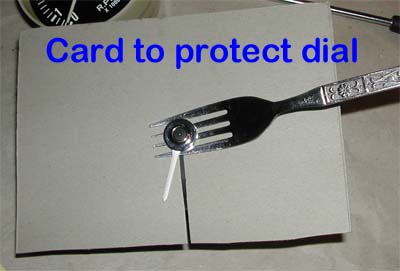
Tachometer Conversion Pt1
Ok, now why on earth would anyone want to mess about with the tachometer on the car when you already have one that works perfectly satisfactorily ?
Well, the OEM instruments work on an impulse sensing mechanism (RVI) and while this works fine with contact breaker points ignition systems, it’s generally accepted to be not so good with electronic ignition systems.
And for someone wanting to fit aftermarket electronic ignition one answer is to obtain a modern (RVC) tachometer. (Edit - things might be different now, this was originally written in 2011-12)
Except that as we know, Europa instruments aren’t growing on trees and so we have a problem. One solution is to send your tachometer to a specialist instrument restorer who will return an effectively brand new instrument which will operate with both CB points and Electronic ignition systems.

Rev Counter Conversion
As you know from other pages this is a Europa running on a budget, but mostly I just like tinkering with ideas. So, as for the Elan pages, my Plan B is to look at transferring a relatively cheap donor RVC module into the OEM casing.
Before I get folks saying “sacrilege” about tearing a good OEM tachometer to pieces, let me add that this one doesn’t work. It’s the original one from my car, which, for some unknown reason simply stopped working one morning in the early 90s.
Fortunately at the time Chris Foulds managed to find a brand new one sitting on the shelf at Lotus and so I just bought a new one and put this one in the cupboard “because I’ll get round to fixing it at the weekend”. 20yrs later and it’s a non-working donor…..

New unit ready for transfer
The photos show an aftermarket tachometer, pod mounted and designed to operate with 4-6-8 cylinder engines and with RVC internals. This one is new old stock, £15 delivered from Ebay UK.
By coincidence it is the same diameter as the Europa but the operating mechanism is much smaller and I would guess is probably the same as those in the 52mm instruments.
The first job is to test it and make sure it actually works because you’re going to be spending some time on this conversion. It’s very easy to wire it up across the battery terminals, clip onto a spare coil terminal and check that it gives approximately the same readings as the current tachometer is doing.
Having confirmed the donor RVC unit is working, it’s time to strip it down. Fortunately this one has an internal plastic shell to mount inside the black outer pod which is very handy as this will make subsequent transfer to the Lotus instrument much easier.
Dismantling both instruments is straightforward, the only point I’d make is that the last thing you want to do is damage the OEM needle or dial face, and removing the needle is often tricky because they are thin aluminium and very fragile.
I use a fork to spread the load on the needle, and a piece of card to protect the dial itself. Using this method you don’t lever against the dial face, but a direct pull on the handle and prongs of the fork. Be prepared for a struggle, this one simply didn’t want to come off !
In all modifications my preference is to not damage the OEM component and so I looked at mounting the dial using the double sided adhesive tape used for badges, etc.

Removing the Needle
But it turned out that the RVC module was too small to allow sufficient purchase for the tape, so in the end I had to drill the Lotus dial to accept the mounting points on the RVC module and disguise the original screw holes. Not ideal by any definition and will need some cleaning up afterwards, but c’est la vie…..